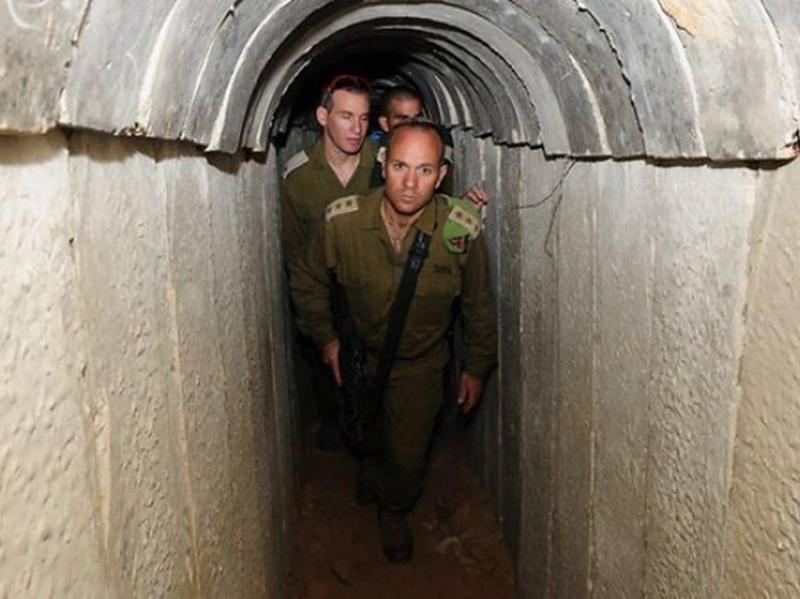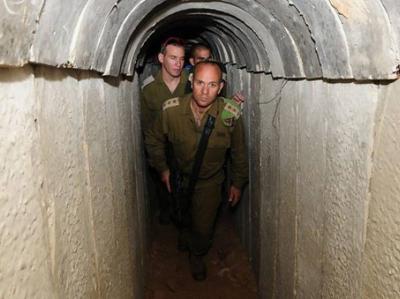Israeli forces have not achieved many of their objectives in eliminating Hamas up to this day. Israel, which has bombed the Gaza Strip with about 32,000 tons of explosives and more than 13,000 bombs, averaging 87 tons of explosives per square kilometer, according to the media office of the Gaza government, has not made progress in addressing the tunnels, which remain the biggest obstacle for them. Given the severity of the battle, Tel Aviv seems to rely on airstrikes and street warfare for now, according to the New York Times. So what is the next step?
The Gaza Strip suffers from terrifying traps known to Israeli soldiers, who anticipate their dangers in urban warfare, such as high ambushes, restricted visibility, and, most importantly, explosive tunnels at the entrances. While Israeli ground forces move forward into Gaza, the greatest danger lies beneath their feet, as Hamas fighters have constructed a maze of hidden tunnels, believed by some to extend across most, if not all, of the territory they control.
However, these are not just tunnels; they twist beneath dense residential areas, allowing fighters to move freely away from enemy eyes. Researchers also believe there are hideouts for storing weapons, food, and water, and even command centers and large openings sufficient for vehicles. The doors and gates, appearing ordinary, serve as concealed entry points, enabling Hamas fighters to embark on missions and return unnoticed. No outsiders have an accurate map of the network, but a few Israelis have seen it firsthand. However, images, videos, and reports from people who were in the tunnels indicate the basic outlines of the system and how it is used. There are also photos taken by journalists inside the passages and accounts from researchers studying the tunnels, along with details of the network that emerged from Israeli forces when they invaded Gaza in 2014.
**Tactical Tunnels**
The reinforced concrete structures serve as more than just transit pipelines; they are shelters against attacks, planning rooms, munitions depots, and spaces for captives. Disassembling the tunnels is a crucial part of Israel’s goal to eliminate Hamas leadership following the October 7 attack, which it used as justification for airstrikes on civilian areas, including a major Israeli air raid that struck a densely populated area in the Jabalia neighborhood, where Hamas denied the presence of its tunnels beneath.
To destroy the tunnels on the ground, Israeli forces in Gaza will need to find entrances frequently hidden in the basements of civilian buildings, leading to concrete-lined tunnels. Experts say they usually measure six and a half feet in length and three feet in width, compelling fighters to move through them in single file. An 85-year-old Israeli woman who was held captive for 17 days in the tunnels after October 7 described walking through a “spider network” of damp tunnels, adding that she eventually reached a large chamber that housed more than 20 captives. It is believed that more than 200 Israeli hostages remain held by Hamas, with many likely located in the same tunnels that Israel aims to destroy.
**Smuggling Tunnels**
These tunnels were documented in the Rafah area, where they are used to bring in all kinds of goods and products into Gaza from Egypt. Reports from some laborers in parts of Rafah indicate that there are many tunnels, some intersecting at different depths. Despite the Israeli military's overwhelming superiority in terms of size and equipment over Hamas fighters, fighting an enemy in its own tunnel network is a high-risk task. John W. Spencer, who studies urban warfare at the Modern Warfare Institute at the U.S. Military Academy, compares it to “fighting underwater rather than on the surface or inside a building.” He recently stated in a program called Modern Warfare Project: “Nothing you use on the surface works; you need specialized equipment for breathing, visibility, mobility, communication, and using lethal means, especially firing.”
Experts also note that one of the main dangers of entering the tunnels is that Hamas has rigged the entrances with explosives. One button! Aharon Brikman, a senior teaching fellow at King’s College London specializing in the Arab-Israeli conflict, stated: “The moment they realize that the Israelis have entered the tunnels, they will press the button, and everything could collapse on the Israelis.” He added that the tunnels are so large that there is no benefit in dismantling all of them; instead, they will likely focus on blocking their entrances through airstrikes or having engineers destroy them with explosives. He also emphasized that it is unlikely they would fight underground unless they believed they had no other choice, as entering the tunnels would strip Israeli forces of their advantages; at this moment, the Israelis are making progress by gathering a large number of troops, tanks, and helicopters. He said, “The moment you go down into the tunnel, you find yourself one-on-one.”
**Booby Traps**
Many of the entrances are hidden in the basements of buildings, but even those outside are difficult to detect. The only way to find them is to send soldiers to scour the areas on foot, and the entrances are often rigged with bomb detonators or tripwires. Multiple entrances and branching passages allow Hamas fighters to wait and then launch surprise attacks on enemy forces. If Israeli forces manage to destroy a tunnel through airstrikes or ground explosives, Hamas can quickly dig more entrances, ensuring the route remains operational. Reports suggest that Israeli forces may not be able to destroy the entire tunnel network.
It is notable that the tunnels dug in Gaza were originally used to smuggle goods to and from Egypt to circumvent the Israeli blockade, but Palestinian activists built tunnels to transport rockets and launchers, protect faction members from being detected by Israeli satellites and planes, and conduct attacks inside Israeli territory. The Israeli Air Force has acquired more American-made bombs to assist in destroying the maze of tunnels used by Hamas elements in the sector; however, analysts report that no progress has been made in this regard to this day.




